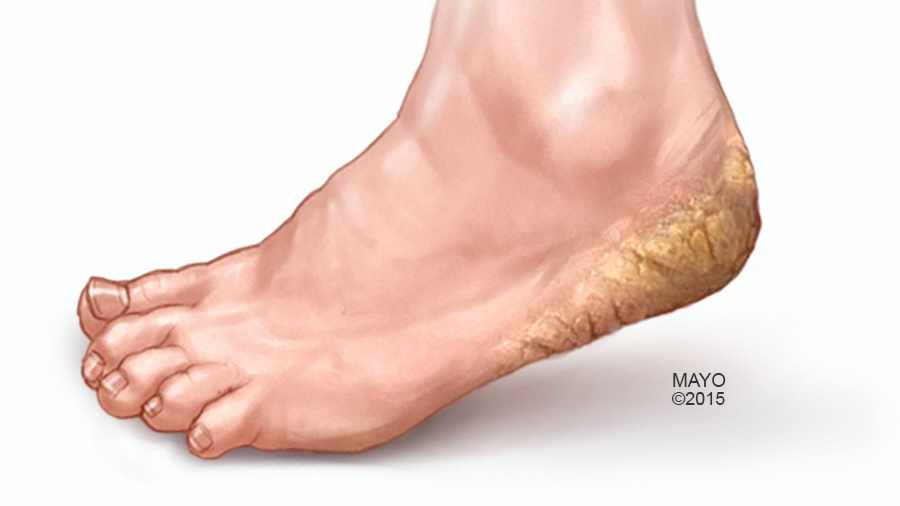-
Mayo Clinic Q and A: At-home treatments often heal dry, cracked heels
 DEAR MAYO CLINIC: My heels get very dry and cracked, and are sometimes painful. What can I do to help make them better?
DEAR MAYO CLINIC: My heels get very dry and cracked, and are sometimes painful. What can I do to help make them better?
ANSWER: There are several things you can do to help heal the skin on your heels. Cracked heels usually develop when the skin around the rim of the heel is dry and thickened and increased pressure applied to the fat pad under the heel causes the skin to split. To prevent this, moisturize often. Moisturizers provide a seal over your skin to keep water from escaping and your skin from drying out. Try rubbing your heels with a thick moisturizer, such as Eucerin or Cetaphil, several times a day. Some moisturizers contain keratolytic agents — such as urea, salicylic acid or alpha hydroxy acid — that help soften and exfoliate the skin, but they may cause slight stinging or irritation.
Foot soaks — in warm, plain or soapy water for about 20 minutes — may be helpful. Follow up with a loofah or foot scrubber, then coat your heels with a petrolatum-based ointment, such as Vaseline or Aquaphor. You might want to use petrolatum-based moisturizers before you go to bed, as they can feel a bit greasy. Slipping on a pair of socks over your moisturized feet may help lock in moisture overnight.
If these measures don’t help, or if your heels become swollen or inflamed, talk to your doctor or a dermatologist. You may need a prescription ointment with stronger moisturizers or a steroid cream to relieve inflammation. Bandages or a special tissue glue can protect and hold the edges of the cracks together so that they can heal. Wearing supportive shoes and losing excess weight also may help relieve pressure on your feet.
If you have other skin conditions, such as psoriasis or eczema, you’ll want to consult with your doctor as well, as this may affect treatment. If you have diabetes, it’s especially important to take good care of your feet. Cracked heels that are left untreated may lead to infection and ulcers. (adapted from Mayo Clinic Health Letter) — Lawrence E. Gibson, M.D., Dermatology, Mayo Clinic, Rochester, Minn.
Related Articles







